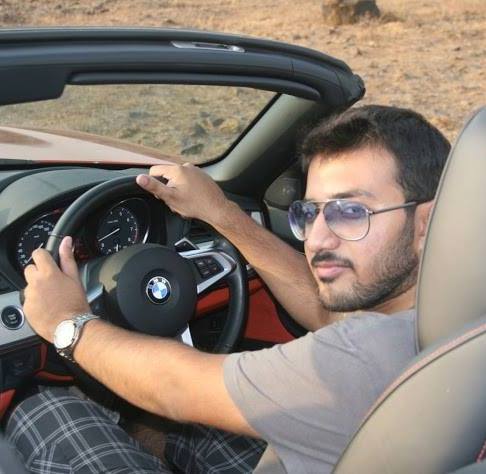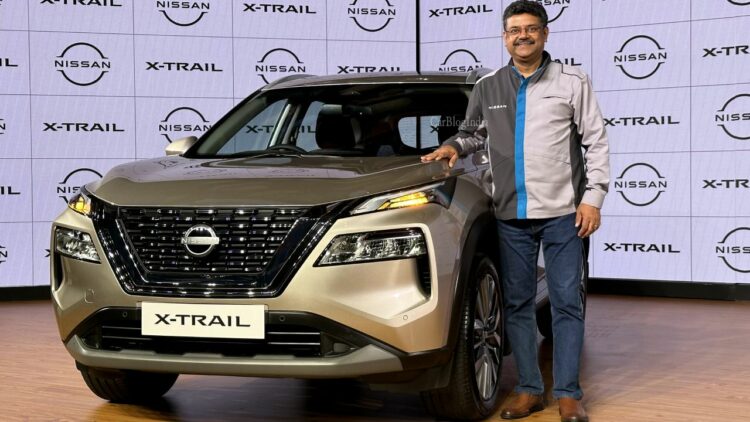The Nissan CEO shared some enticing details about the upcoming plans of the Japanese carmaker for the Indian market.
On the sidelines of the new Nissan X-Trail‘s media drive, we had a chat with Saurabh Vatsa, MD, Nissan Motor India. The conversation revolved around the carmaker’s ‘The ARC’ business plan, under which it plans to revitalize its operations through the launch of multiple mass-market products within the next couple of years. We also spoke a bit about the new X-Trail and the upcoming Magnite facelift, along with briefly touching upon the subjects of alternative fuel-powered cars, and the company’s long-standing association with Renault. Let us take a look at what the bossman at Nissan India had to say to us.
Conversation With Saurabh Vatsa
Q. What are the sales expectations from the new X-Trail and do you think the current dealership network would need some sort of an upgrade to cater to the premium clientele?
A. There are no sales targets because, with CBUs, you have the flexibility of scaling up or scaling down as per the situation. We have 150 cars in stock in three colours. This shows that we are very serious about the CBU business. There is a very strong backing on the pre-interest from the customers as we have been working very closely with the customers. So there are no volume targets with the X-Trail. It will bring all the halo technologies from Nissan to India. In terms of the upgrades to the dealerships, over a phased period of time, we plan to bring the entire network under the Nissan Retail Concept (NRC) format. All new dealerships are going through the NRC format. Even the existing dealers will get upgraded to this format. This process will include a lot of scaling up of manpower, skills, training, and capabilities to sell all products. A lot of systems are evolving since we are going from 1 car to 5.
Q. Do you think India will become an export hub even for models which are not meant for India?
A. Our strategy is very clear now. Going forward, Nissan is going to focus on the Indian consumer first. Indian consumer has become very demanding. Standards on cars have gone up and the regulations are world-class today. Therefore, you will see that we are catering completely to domestic buyers first. Then these cars will also go to the export markets. If we look at the success of Magnite, it is a one-car wonder. We have done 30,000 + consistently for the past 3 years. With over 100,000 units done, 30,000 units have been exported. After we give it a refresh (facelift), it will become one global for India and RHD and LHD cars going overseas. Clearly, the focus is going to be domestic customers first and then the world. This will also apply to the 2 new C-SUVs that we will get in and also for the affordable EV that we are working on.
Q. Will the two upcoming C-SUVs be merely different seat configuration versions of the same car or two different cars altogether?
A. No. These will be two almost different vehicles based on the same platform. Japanese carmakers go really wide and deep into consumer research. When you do that and look at the data that comes out, a 5-seat SUV customer and a 7-seat SUV customer are two very different sets of customers altogether. Their usage profiles, performance, and space requirements, throughout the week and over the weekends, whether it is a salaried buyer or a business buyer, are completely different. Therefore, the two vehicles will look completely different.
Q. Now that we are on the topic of C-SUVs, should I assume that there will be a return of the Terrano nameplate?
A. I cannot comment on that at the moment because that subject is wide open on the table.
Q. How has been the response to the Magnite EZ-Shift AMT and what is the demand division between the Nissan CVT and EZ-Shift AMT?
A. Nissan Magnite offers a full range in terms of naturally aspirated engine, turbo petrol engine, manual transmission, automatic transmission and a CVT. The CVT is mated only to the turbo. Turbo is also available in manual but it is not available with the AMT. Hence, whatever we sell on the CVT is 100% turbo and AMT is naturally aspirated. On the AMT, we have seen a pretty good demand. It has gone up to about 27% from 15% when we launched it late last year. CVT is about 15% of total sales at the moment. Interestingly, we have just got a certificate from the India Book of Records, AMT is the first 1000-cc automatic to reach Umling La at the altitude of 19,029 ft. That makes it the first one in the country and perhaps in the world. AMT is a very robust packaging and it is at a very sweet spot in the market. Also, our CVT is among the only CVTs in the market at a price point of sub-Rs 10 lakh. Right now, we have the Geza Edition of our CVT which is at Rs 9.84 lakh. At that price point, there is no other CVT. So, we have a full range on the Magnite.
Q. Have you considered exploring the CNG option, especially for the entry-level models?
A. Well, in terms of powertrains, we are looking at all possible powertrains for the future. No definite direction in terms of dates. But yes, all these things keep getting considered. Alternative fuels are something Nissan keeps focusing on. Again, the capabilities of Nissan for Ethanol-based engines exist. CNG is very specific to India and we are exploring options. But at the moment, we don’t have a date.
Q. Speaking of your electrification plans, it was only a few weeks ago when it was announced that globally, Nissan would shift its focus away from internal combustion engines and more towards EVs and electrification and given that the demand for electric cars has been stagnating in the USA, while it has been on a rise in India, do we see some higher focus on the Indian market?
A. Nissan has a very clear strategy of a very balanced portfolio. There will be a balance between ICE and EV and the focus will not be tilting towards one propulsion system. In India, the percentage of EVs is still around 1.5%. Even if you add hybrids to that, it is about 3.5% to 4%. So it is not like the entire market is tilting towards EVs. You still have over 90% of ICE cars. For us, EVs will play a crucial role because EVs are going to come. The CAFE standards that the government is defining as stage 3 for 2027 onwards, you will need EVs. What we are looking at is building an affordable EV, A or B segment, that is yet to be decided and shared. But they have to be competitive and cater to the consumer. Competition is about the market and not profitability. For this, a complete ecosystem for EVs has to be there in India. This includes electric motors, batteries, controllers, etc. You also need to have very strong levels of localization. Hence, the EV will come toward 2026. It will be a fresh SUV which will be competitive and localized.
Q. Will it be, in some way, related to the Dacia Springer?
A. No comments on that at this point in time because like I said we are still working on A or B platform. It will be too immature to talk about it now.
Q. In the last few years, there has been some disparity between the product portfolios of Nissan and the alliance partner Renault. Going forward, can we see some sort of parity or similarity between the product portfolios?
A. I think, while we are a great alliance together, the brands have their own strategies. Like we have a CBU and they don’t. So, to some extent, the brands also have their independent direction. I will not comment on what Renault is doing but only on what Nissan is doing. We have shared transparently the plan between the middle of 2024 to 2026. We are focusing on domestic markets and multiplying volumes there taking it to almost 100,000 units by 2026. Export is being supported by domestic market production. We want to export 100,000 units by 2026.
Q. The way you explained the variable compression ratio at the X-Trail presentation was outstanding. Do you think this rather unique powertrain will have a key role in defining the new X-Trail’s sales performance?
A. Many companies have tried to do the variable compression ratio engine and Nissan was the first one to go into production with this patented technology. The power delivery is absolutely seamless. You don’t feel when the engine is going into low compression ratio or high compression ratio cycles. With the CVT on the X-Trail, you don’t feel the rubberband effect. With the paddle shifters, you have control over 8 fixed steps/gears. The engine and transmission adjust seamlessly when you go flat out with the accelerator or are crawling at the traffic light with the 12V system which aids start/stop traffic due to the 6 Nm of torque for 20 seconds available at its disposal. These are all the finest of technologies which are at work in tandem and the customers or the drivers don’t know what is happening under the hood. The NVH levels of the X-Trail are super refined. On July 23, we dispatch the cars to the dealerships, on July 26, the bookings open, on August 1, the prices will be announced and the deliveries will commence within August itself.
You may also like: Nissan Confirms 7-seat SUV for India, Renault Bigster-Based?




